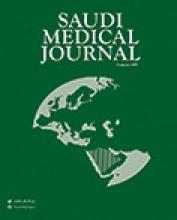CLINICAL GUIDELINES
Saudi Arabia Guidelines for diabetic macular edema. A consensus of the Saudi Retina Group
AlQahtani et al suggests for patients with no central macular involvement, laser photocoagula-tion is recommended as the first-line option. Patients with central macular involvement and no recent history of CVS should be offered anti-VEGF agents as the first-line option. In the case of non-responders, switching to another anti-VEGF agent or steroids should be considered. Diabetes mellitus and its complications are major public health burdens in Saudi Arabia. The prevalence of diabetic retinopathy (DR) is 19.7% and the prevalence of diabetic macular edema (DME) is 5.7% in Saudi Arabia. Diabetic macular edema is a vision-threatening complication of DR and a major cause of vision loss worldwide. The present consensus was developed as a part of the Saudi Retina Group’s efforts to generate Saudi guidelines and consensus for the management of DME, including recommendations for its diagnosis, treatment, and best practice.
see page 130
ORIGINAL ARTICLES
Challenges in diabetic foot treatment during pandemic of COVID-19
Vukas et al concludes that no significant differences in amputation treatment between the 2 comparative groups were noted. In addition, no confirmed COVID-19 infections in medical staff who performed surgical interventions or in treated patients were detected. We randomly divided patients in 2 groups of 30 patients each. In pre-operative treatment, local anesthesia lidocaine hydrochloride 2% in group A and systemic analgesia intravenous tramadol chloride 100 mg intravenous in group B was used. Wounds were surgically treated each day and heal spontaneously. Wound healing did not present any statistically significant differences between groups.
Wound healing in days
see page 165
Clinical presentations, radiological characteristics, and biological risk factors of cerebral venous thrombosis at a University Hospital in Saudi Arabia
Alamri et al describe the clinical features and possible etiologies of cerebral vein thrombosis (CVT) in a Saudi Arabian cohort. The age of patients ranged between 19 to 82 years, and the mean/median age was 33/29 years. Most commonly reported symptoms were headache, unilateral lower limb weakness, and seizures. The transverse sinus was the most frequently thrombosed sinus. Iron deficiency anemia emerged as a predisposing preventable condition for CVT, while genetic factors were found to be less important in this cohort.
Demographic characteristics and clinical features
see page 212
CASE REPORT
The first Saudi baby with classic homocystinuria diagnosed by universal newborn screen-ing
AlAnzi et al presented a baby boy born at term with normal vaginal delivery weighing 3.5 kg, within the 50th centile chart. His clinical examination was unremarkable, including normal facial appearance, eyes, and central nervous system examination. Thereafter, total serum homocysteine was found to be elevated, consistent with the diagnosis of classic homocystinuria (CH). An early medical and dietary management was commenced for this first Saudi baby diagnosed with homocystinuria by a universal newborn screening (NBS). This study demonstrates that NBS for CH is feasible and effective in preventing the disease burden.
Chromatograph of cystathionine beta-synthase gene showing a homozygous pathogenic variant
see page 218
- Copyright: © Saudi Medical Journal
This is an open-access article distributed under the terms of the Creative Commons Attribution-Noncommercial License (CC BY-NC), which permits unrestricted use, distribution, and reproduction in any medium, provided the original work is properly cited.









